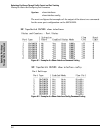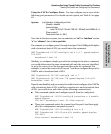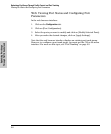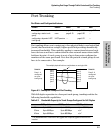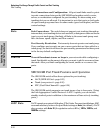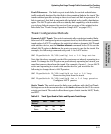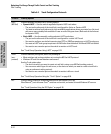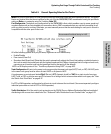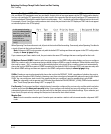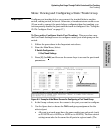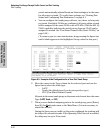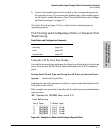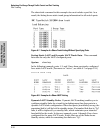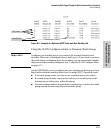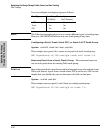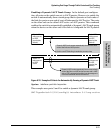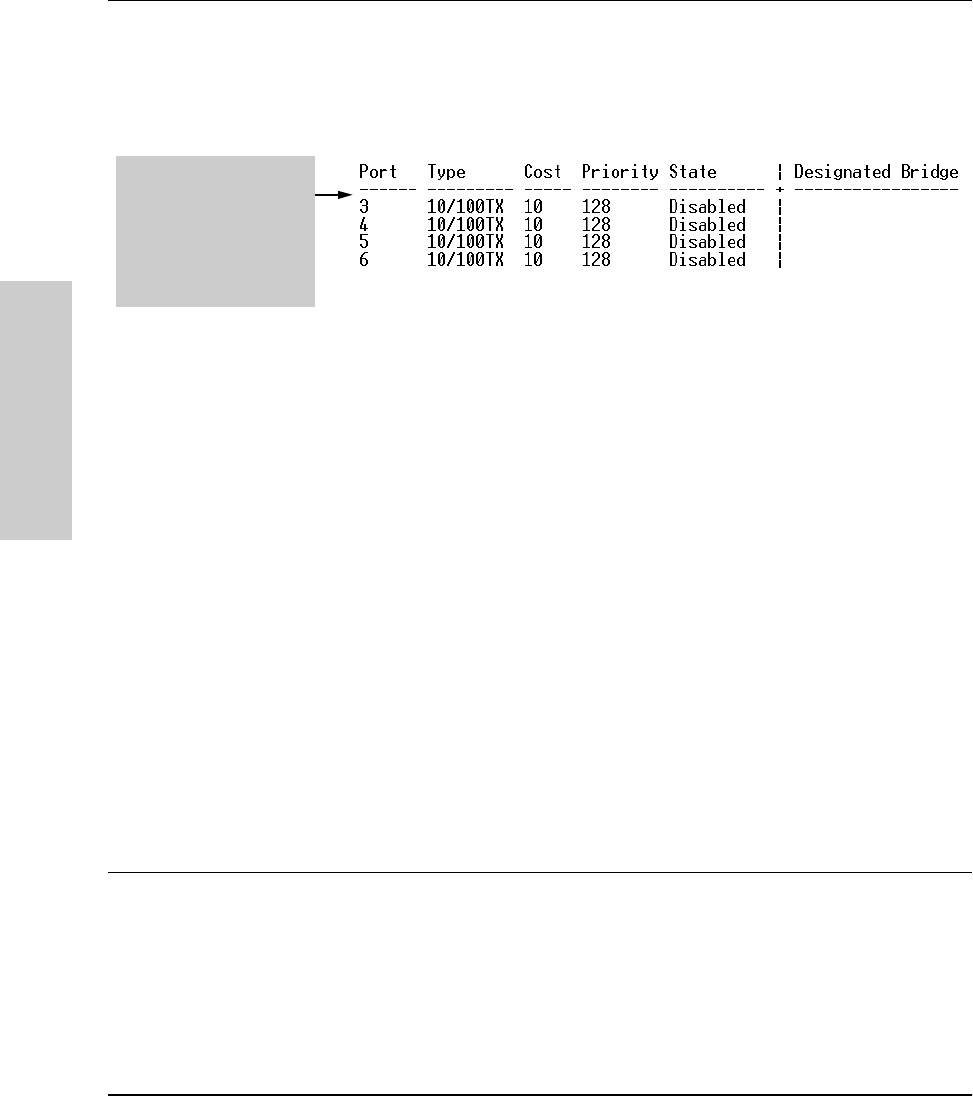
6-14
Optimizing Port Usage Through Traffic Control and Port Trunking
Port Trunking
Optimizing Port Usage
Through Traffic Control and
Spanning Tree Protocol (STP): STP operates as a global setting on the switch (one instance of STP per switch). However,
you can adjust STP parameters on a per-port basis. A static trunk of any type appears in the STP configuration display,
and you can configure STP parameters for a static trunk in the same way that you would configure STP parameters on
a non-trunked port. (Note that the switch lists the trunk by name—Trk1—and does not list the individual ports in the trunk.)
For example, if ports 1 and 2 are configured as a static trunk, they are listed in the STP display as TRK1 and do not appear
as individual ports in the STP displays.
When Spanning Tree forwards on a trunk, all ports in the trunk will be forwarding. Conversely, when Spanning Tree blocks
a trunk, all ports in the trunk are blocked.
Note: A dynamic LACP trunk operates only with the default STP settings and does not appear in the STP configuration
display
or show ip igmp listing.
If you remove a port from a static trunk, the port retains the same STP settings that were configured for the trunk.
IP Multicast Protocol (IGMP): A static trunk of any type appears in the IGMP configuration display, and you can configure
IGMP for a static trunk in the same way that you would configure IGMP on a non-trunked port. (Note that the switch lists
the trunk by name—Trk1—and does not list the individual ports in the trunk.) Also, creating a new trunk automatically
places the trunk in IGMP Auto status if IGMP is enabled for the default VLAN. A dynamic LACP trunk operates only with
the default IGMP settings and does not appear in the IGMP configuration display or
show ip igmp listing.
VLANs: Creating a new trunk automatically places the trunk in the DEFAULT_VLAN, regardless of whether the ports in
the trunk were in another VLAN. Similarly, removing a port from a trunk group automatically places the port in the default
VLAN. You can configure a static trunk in the same way that you configure a port for membership in any VLAN.
Note: For a dynamic trunk to operate in a VLAN other than the default VLAN (DEFAULT_VLAN), GVRP must be enabled.
See “Trunk Group Operation Using LACP” on page 6-23.
Port Security: Trunk groups (and their individual ports) cannot be configured for port security, and the switch excludes
trunked ports from the
show port-security listing. If you configure non-default port security settings for a port, then
subsequently place the port in a trunk, the port security for that port returns to the default settings. If you remove a port
from a trunk, the port security settings for that port are returned to their default values.
Monitor Port:
Note: A trunk cannot be a monitor port. A monitor port can monitor a static trunk but cannot monitor a dynamic LACP
trunk.
In this example showing
part of the show spanning-
tree listing, ports 1 and 2
are members of TRK1 and
do not appear as individual
ports in the port
configuration part of the
listing.



